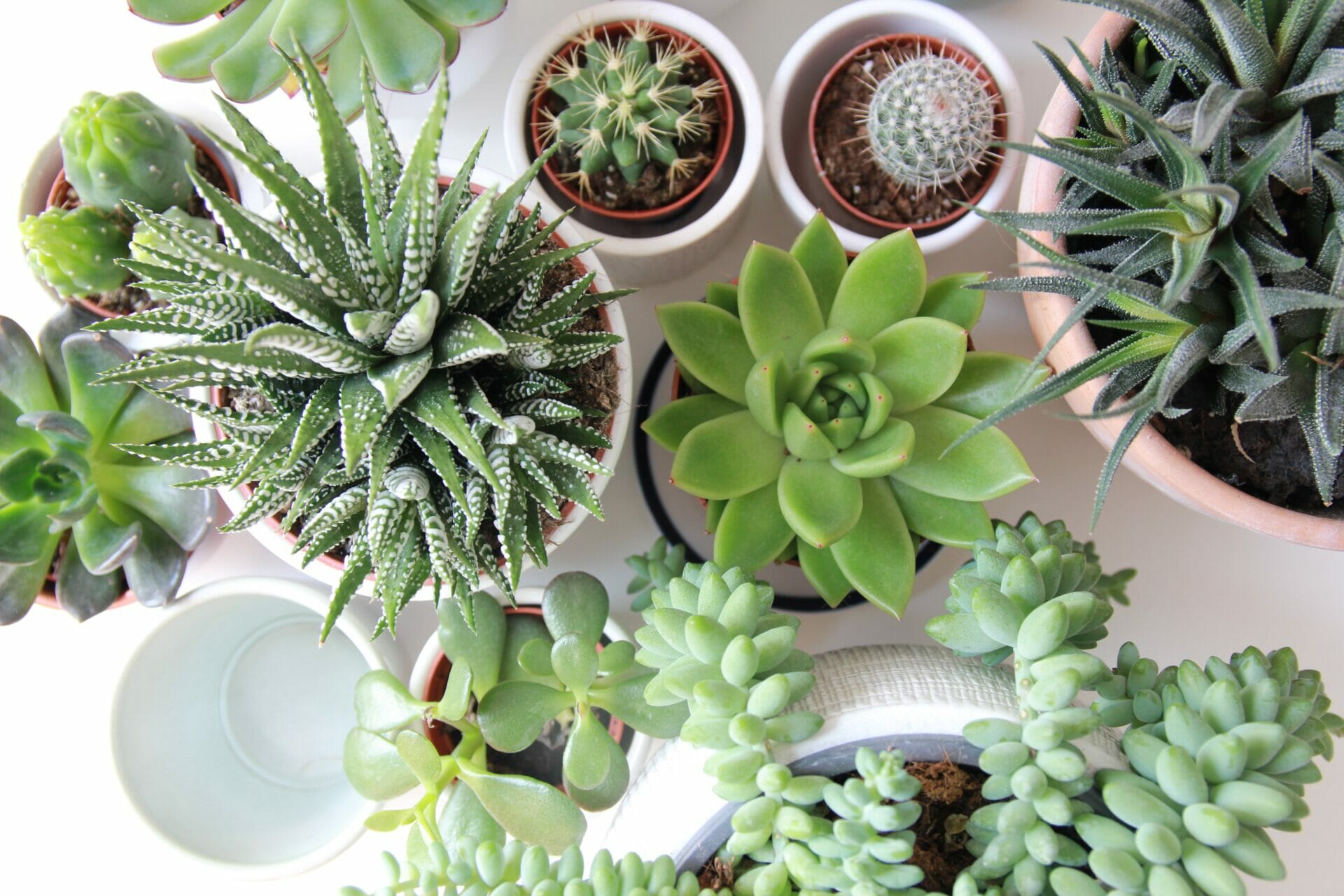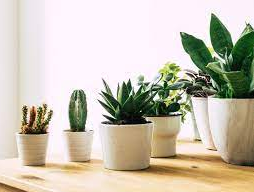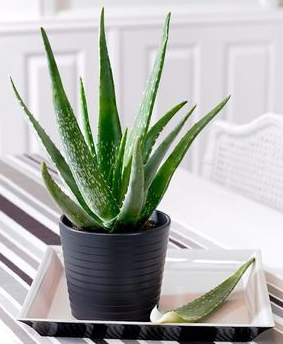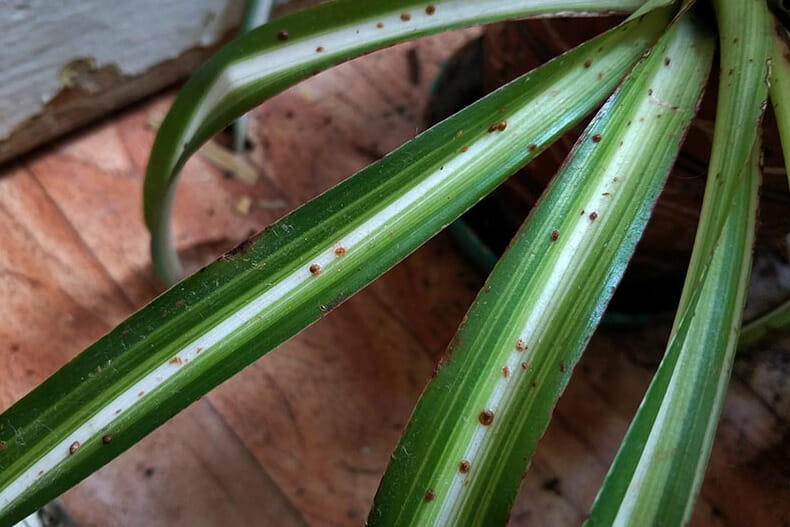The succulent craze has taken everybody by storm in the last few years. Especially during the Covid-19 lockdown, people started to show special interest in plants, and succulents became a popular choice. Succulents and cactus are an easy option as they are low maintenance, making them perfect for beginners. However, negligence and no prior knowledge about plant requirements can result in our succulents’ death. Therefore, if you are planning on buying succulents for space, then this article is your perfect guide on How to keep succulents alive indoors?

How to Keep Succulents Alive Indoors A Beginner’s Guide
Succulents are fun plants; they are eye-catching, and a huge variety is available in different shapes and sizes. You can grow them anywhere, and they will be just fine. You may have heard succulents are easy to maintain and do not require much care. Although succulents can survive in harsh environments and long periods with very little water, just like other plants, they also require a certain level of care and attention apart from a lot of love.
Why Must one Have Succulents Indoors?
Not everyone has a lawn or a backyard for plants, so people tend to grow plants indoors to fulfill their love for plantations. Succulents can grow healthier and happier outdoors because they love the sun and a certain level of neglect. But succulents can also grow indoors, provided the right conditions, and feel close to nature. They also have several benefits besides being an attractive plant.
- Inexpensive
Moreover, they are inexpensive, so you can get as many as you want because these little buddies do not take up too much space.

- Low Maintainance
Succulents are drought-resistant plants and can survive in harsh conditions without a high amount of water. They can go days, even weeks, without water. Most of the succulents like bright sun, so keep them in a room with plenty of sunlight. However, low-light succulents like the snake plant, aloe vera, and jade plant are also available if your space is not well-lit. So, choose the succulent carefully according to where you will be putting it.
- Improves Humdity:
Succulents release water vapors increasing the overall humidity in their surroundings. Lack of humidity causes different health issues like sore throat, dry cough, etc., so increased moisture in the room where succulents are present certainly helps.
- Excellent Air Purifier
According to NASA’s top list of air-filtering indoor plants, succulents, especially snake plants, remove many volatile organic compounds (VOCs) from the air. Snake plants quickly eliminate benzene and formaldehyde VOC, easily found in rugs, books, grocery bags, and cigarette smoke.

- Adds Oxygen to Environment:
Usually, plants release carbon dioxide at night. However, succulents produce oxygen at night which keeps the air fresh, pure, and clean. Succulents are ideal for bedrooms, kitchens, and bathrooms where you need an extra boost of fresh air.
- Improves productivity:
Having a little plant at your office gives you happiness every time you look at it. Improved mood leads to increased productivity. This is the reason plant lovers are the happiest of all.
- Healing Powers
Throughout history, succulents have been used to treat burns, cuts, and other medical issues. Agave has anti-septic and anti-inflammatory properties. Aloe vera is known best for its benefit to the skin and hair and is an essential ingredient in many beauty products. And if someone has high blood pressure, stonecrops leaves can be sued to lower the blood pressure.

Tips to Keep Succulents Alive Indoors
If you are a beginner and keep killing your succulents, then the tips in this article will help you keep your succulents alive indoors.
1. Give Sufficient Sunlight:
Succulents are low-water plants, but that does not mean they are also low-light. Naturally, succulents grow in dry environments with direct sunlight. So the sun is essential for the healthy growth of succulents. Without sufficient sunlight, the succulents become leggy, growing very tall and stretched out.
If you want that your succulent stays alive, you should at least give them six hours of sunlight. When the succulents are placed indoors, ensure they are near a window or space where light is readily available. If you have newly-planted succulents, do not put them directly into the sunlight and introduce them to sunlight gradually with time. However, too much sun results in discoloration of the succulents.

2. Frequently Rotate The Pot
Balanced sunlight is important for the consistent growth of the plant. If you notice a plant has burnt leaves, then it is getting too much sunlight, therefore, reduce the timespan of sunlight for it. Similarly, a plant leaning towards the sun is not getting enough sunlight. Please put it in the sunlight a little more.
Yes, succulents love the sunlight, but all parts love it, not just the one side. If your succulent plant is in one spot for so long, its leaves will burn. In comparison, the leaves on the side of the succulent not in the sun will lean towards the sun. Therefore, it is suggested to rotate the succulents from time to time for the leaves to grow straight upward. Make it a routine to change the side every 2 to 3 days.
If you are rotating your succulent plant frequently and giving it enough sunlight, it will neither lean towards the sun nor burn up. This not only keeps them healthy but also has an aesthetic benefit.

3. Proper Watering
Low water doesn’t mean no water. Watering is the most critical part of keeping succulents alive indoors. However, it would be best if you water the succulents according to their requirements. For different types of succulents, requirements vary. You should search on the internet and then start watering accordingly. You can divide watering guidelines into two categories.
- Watering According to the Seasons
Succulents, like humans, require more energy when they are growing. Plants thrive and consume more water during the spring and summer than they do during the fall and winter. So if your succulent is getting bright sunlight and the weather is hot, the plant may need more water than usual. Similarly, the succulent can go on days without watering if the weather is humid.

- Avoid Overwatering
Overwatering is a typical mistake that many people make with succulents. It doesn’t matter how much water you use on your plants as long as it drains. However, the regularity with which you water your plants is critical. Water the plant again only when the soil is dry.
Succulents like dry soil, so let the soil dry completely between waterings. Overwatering must be avoided, especially indoors, because lack of bright sunlight and air conditioning slows down soil drying. If the potting soil stays damp all day, the plant will become yellow and black and die from root rot. The last thing you want to do after buying a succulent is kill it!
- Water the Soil Directly.
While watering, aim for the soil and not the leaves. Because watering the leaves forms a water spot on those beautiful leaves and leads to the rotting of leaves. Soak the soil in water until it streams out of the drainage holes while watering your succulents. (Use less water if your container lacks drainage holes.) Watering succulents with a spray bottle might result in brittle roots and rotting leaves.
You can also submerge pots in water and allow the water to drain through the drainage hole. Remove the soil from the pan once the top layer is damp.

4. Select Pots with Drainage
Succulents dislike sitting in damp soil. Therefore drainage is essential to prevent root rot. Your pot should have a drainage hole to allow excess water to drain out of the soil. For succulents, terracotta pots are a preferred choice as they are porous and drain water faster. However, ceramic pots with drainage holes are also used.
Drainage holes in plant pots are of utmost importance to prevent overwatering, as they do not allow the water to sit at the base of the container. Stagnant water is the most significant cause of root rot. Moreover, constantly damp soil is perfect for the growth of fungus and bacteria. If you have mistakenly watered the pot, then the drainage hole will do its work. Drainage holes will also eliminate the excessive water in the pot to keep your succulents alive indoors.

5. Keep your Succulents Clean
Whether you want it or not, your succulents will catch some dirt. To keep the succulents alive indoors, you need to have a regular check-up on the plant. Clear the dust, and remove the webs, if any. Gently wipe the leaves and spines with a wet towel (use a soft paintbrush to get at hard-to-reach spots).
Powdery mildew usually appears when the soil remains wet for an extended period or when water remains on your succulent leaves for an extended time. If you discover powdery mildew, quarantine your succulent right once to prevent it from spreading.

6. Fertilize your Succulents
Succulents do not require much fertilizer, yet it is still necessary for their care. Succulents only need to be fed once a year. For optimal results, use any well-balanced organic fertilizer. And feed at the start of the plant’s growing season. However, you can give them light feedings during the spring and summer growing seasons.
Overfertilization might cause your succulent to develop too quickly and become weak. It makes little difference if you don’t fertilize them. They will most likely grow faster and more prominent if you fertilize them. The best times to fertilize your succulents are in the spring when the temperature stays over 60 degrees, and in the fall, just before a shower.

7. Select the Suitable soil
Succulents are drought-tolerant plants that do not require constant watering; their potting soil should be porous and well-draining. A loose, grainy soil mixture rich in sand, perlite, or pumice is suitable. Moreover, it should contain less organic matter than standard indoor soil mixtures.
However, sand from the yard, the beach, or a sandbox should not be used (you never know what nasties will be in there). Planting succulents in standard potting soil raises the risk of overwatering. When the soil absorbs too much moisture, your succulents will rot soon.

8. Inspect the Bugs:
Succulents are more vulnerable to pests indoors than they are outside. Examine your plants regularly. Ensure they are free of gnats or mealy bugs, which signal that they have been overwatered or over-fertilized. Mealybugs feed on the plant fluids of their host. They can deposit hundreds of eggs, causing long-term harm to plants.
Rubbing alcohol on succulent leaves or soil kills mealybugs and their eggs. If you’re bringing a succulent home from a nursery, inspect the leaves and soil first to ensure you don’t bring any bugs.

Conclusion:
Succulents are loved due to their low maintenance and tough nature. However, they are low-maintenance doesn’t mean you should leave them unattended. If you follow the proper guidelines, you can surely keep your succulents alive indoors.
We hope this article was helpful to you. If you like this article, visit our website for more articles on pots and plants.
Helpful Products:
This excellent soil mix is a good value for money. It is pre-mixed and ready to use. The formula is specially designed for cactus and succulents. It provides optimal drainage, retains enough water, and helps absorb nutrients.
Terracotta Pots For Succulents
These classic terracotta pots have a smooth matte finish. The porous round terracotta pot is perfect for succulents. A drainage hole is also present, and the pots come with saucers.
Succulents and Cacti Fertilizer
You can give your succulents and cacti plant food once in 6 months. This fertilizer is one of the best as it has a balanced mix of essential nutrients required for the optimal growth of succulents and cacti. It is an alternative to liquid fertilizers and can be added to the pot directly by poking holes in the soil mix.
Frequently Asked Questions
1- How often should succulents be watered indoors?
Succulents can survive happily in low water. Therefore, it is not necessary to water them daily, and you can water them once a week. Remember that the soil must be completely dry for the next watering. If you water more than often and the soil remains moist, it can lead to root rot.
2- Can succulents be kept indoors without sunlight?
Succulents are sun-loving plants. Try to put your succulents in a room that has sunlight. Even the succulents that are low-light cannot survive without exposure to sunlight. The succulents should get at least give them six hours of sunlight. You can get a grow light if your room does not have a window.
3- How do you tell if you are overwatering succulents?
Succulents leaves are thick, having the ability to store water. Due to overwatering, the leaves become soft, squishy, and translucent. Another sign of overwatering is discoloration in leaves.
People Also Search:
how to keep succulents alive in winter indoors
25 types of succulents
indoor succulents low light
indoor succulent care for beginners
succulent care for beginners
how to keep succulents alive without sunlight
how to keep a succulent alive in an office
do succulents need direct sunlight



